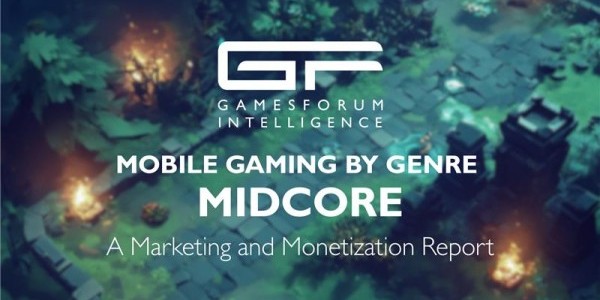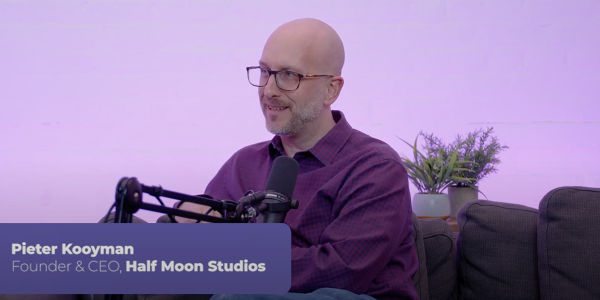The Truth About Bidding-Only vs. Hybrid Waterfall Models in Mobile Game Monetization

While the industry pushes toward Bidding-Only models, monetization specialist Bruno Balistrieri's A/B testing revealed a different story. Bruno's research shows how the promising initial results often deteriorate as networks gradually adjust their bidding strategies over time. His innovative "Canary Test" demonstrated how demand partners modify their algorithms once they've analysed the competition.
The key revelation? Hybrid Waterfall models consistently outperform pure bidding approaches by combining auction efficiency with the stability of traditional placements. Bruno offered practical strategies for publishers to maintain revenue control while navigating the push toward automation from mediation platforms. For developers looking to balance short-term gains with long-term stability, his data-driven approach cuts through the hype to show what actually works in today's complex ad monetization landscape. Bruno delves into what he found.
What were the key motivations behind testing the Bidding-Only waterfall, and how did you expect it to improve monetization?
The main motivation was to assess whether a fully Bidding-Only model could maximize fill rate and improve auction efficiency by removing the need for manual prioritization in the waterfall. The expectation promised by this approach is that real-time competition among networks would drive up eCPMs, simplify operational workflows, and reduce latency by eliminating the traditional waterfall setup. Given that I had some failed experiences with that previously, I wanted to understand again whether the opposite happens, when the eCPM decrease harms the whole setup.
Based on your AB tests, what do you see as the biggest limitations of the Bidding-Only model, especially in terms of long-term revenue stability?
One of the biggest limitations is the potential volatility in eCPMs over time. Unlike hybrid models, where guaranteed deals or historical floor prices can stabilize revenue, Bidding-Only models are fully dependent on market demand at any given moment. This can lead to revenue fluctuations, especially when demand softens. Additionally, some networks still perform better in a traditional waterfall setup, meaning a full transition to bidding may not always yield optimal results.
Your data shows a decline in eCPM over time with Bidding-Only. Why do you think this happens, and is there a way publishers can mitigate this decline?
The decline in eCPM over time is likely due to reduced competition as networks adjust their bidding strategies. Initially, when a publisher transitions to Bidding-Only, demand partners may bid aggressively to establish their position. However, as historical data builds up, networks optimize their algorithms to maximize their margins, leading to lower bids. To mitigate this, publishers can:
- Regularly refresh demand sources to maintain competition.
- Test different auction models, such as hybrid approaches.
- Implement floor prices strategically to counteract aggressive bid reductions (such as the canary test)
How does a Hybrid Waterfall compare to Bidding-Only in terms of performance? Do you believe it's the best model for most publishers?
Hybrid Waterfall models generally provide a more balanced approach, combining the efficiency of bidding with the stability of traditional waterfalls. While Bidding-Only can be more efficient in theory, some networks still perform better with traditional prioritization. Hybrid setups allow publishers to retain high-value placements in the waterfall while still benefiting from bidding competition. For most publishers, a hybrid model is often the best approach, as it provides greater control over revenue stabilization.
What role do automated waterfalls play in optimizing monetization, and how can developers implement them effectively?
Automated waterfalls use an algorithm set by the publisher to dynamically adjust network placements and pricing thresholds based on real-time performance data. This minimizes manual work and optimizes revenue without requiring constant intervention. Developers can implement them effectively by:
- Using mediation platforms that support automated price adjustments.
- Develop a tool internally that understands the waterfall rules and the call-to-action approach the publishers want to follow, and integrate this within your mediation’s API.
- Regularly analyzing historical data to set dynamic floor prices.
- Running continuous A/B tests to fine-tune configurations.
You mentioned that mediations are pushing publishers toward Bidding-Only. What should publishers watch out for when transitioning, and how can they maintain control?
Mediation platforms often promote Bidding-Only models because they simplify integration and reduce operational work. However, publishers should be cautious about:
- Revenue stability: Some networks still perform better in a waterfall setup.
- Loss of control: Without manual prioritization, revenue optimization becomes fully dependent on auction dynamics.
- Fill rate fluctuations: Ensuring a diverse demand mix is key to maintaining fill rates.
To maintain control, publishers should keep a mix of bidding and traditional demand sources, continuously monitor performance, and set floor prices strategically
What insights did you gain from the 'Canary Test' about network behaviors, and how can publishers use similar testing strategies to refine their monetization approach?
The Canary Test revealed how different networks adapt their bidding strategies over time. For example, some networks bid aggressively at first to gain market share, but gradually lower their bids once they analyze the competition. Publishers can use similar strategies by:
- Running controlled tests with new networks before fully integrating them.
- Tracking bid trends over time to anticipate changes in competition and seasonality.
- Regularly iterating on monetization setups to prevent stagnation.
If a developer has limited resources for monetization experiments, what are the most critical AB tests they should prioritize for maximizing ad revenue?
For developers with limited resources, the most impactful A/B tests should focus on:
- Hybrid vs. Bidding-Only models – Determine the optimal mix of auction types.
- Floor price optimization – Set and adjust floor prices to maximize revenue without sacrificing fill rate.
- Ad placement testing – Analyze the impact of different placements on engagement and retention.
- Ad frequency testing – Find the balance between maximizing impressions and maintaining user experience.
- Network prioritization – Identify the most valuable demand sources and adjust accordingly.










